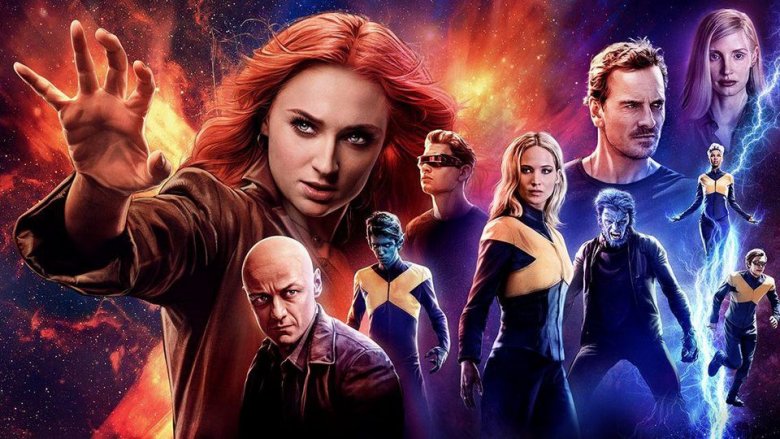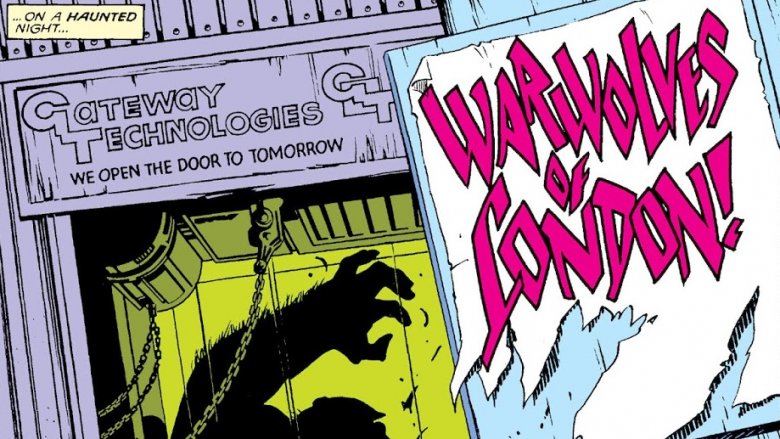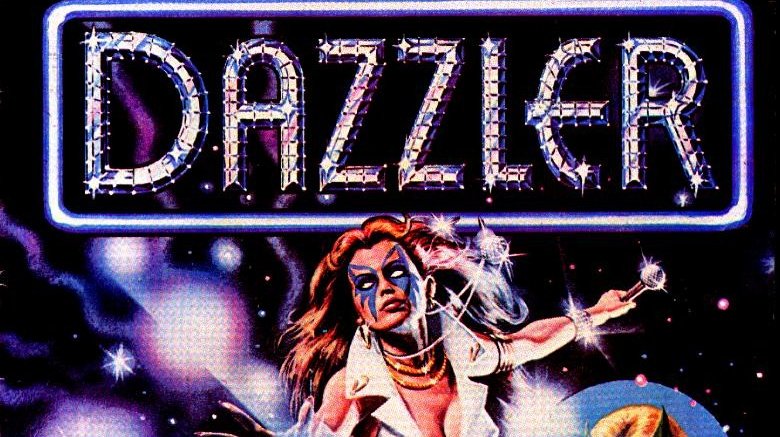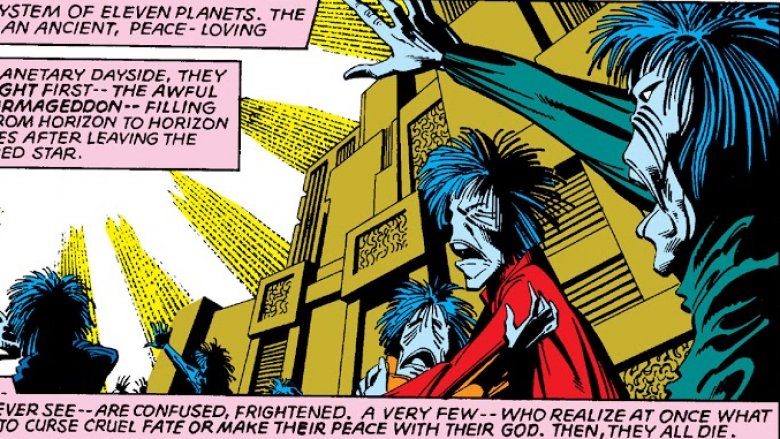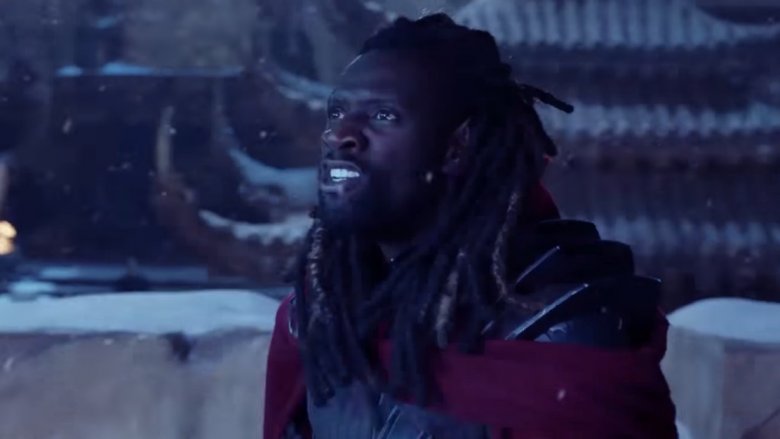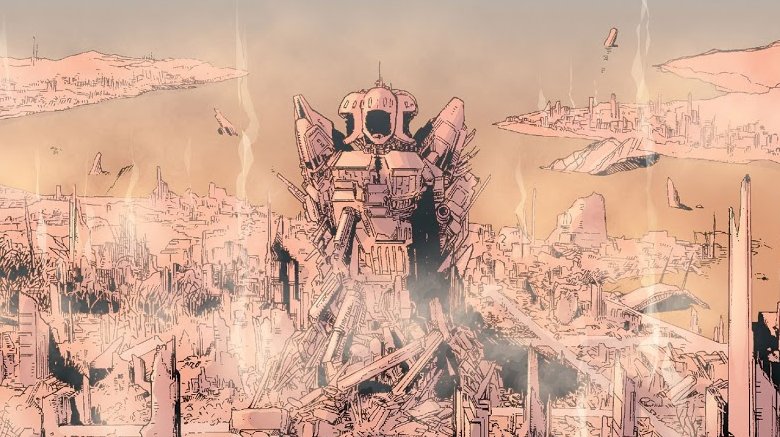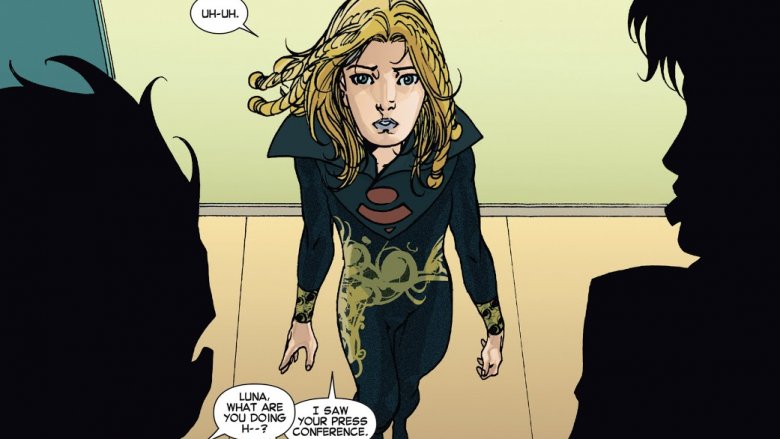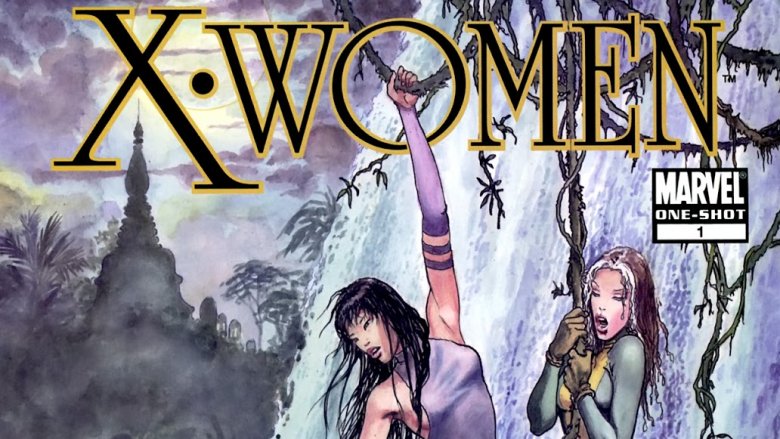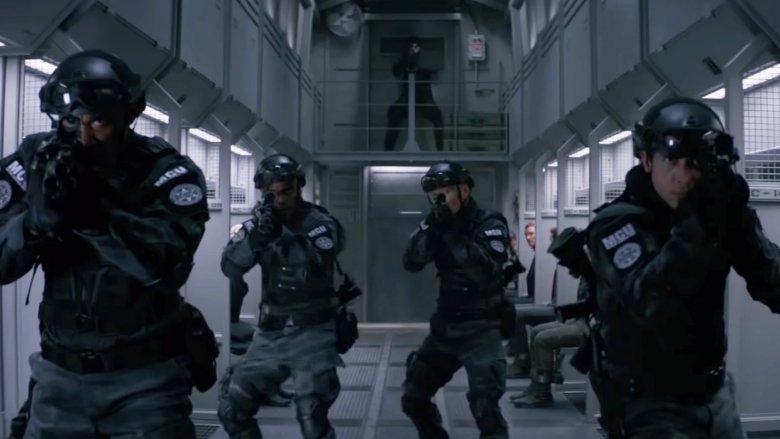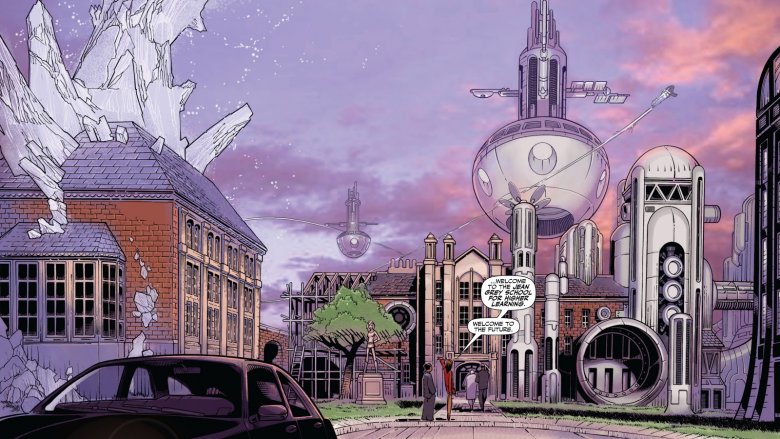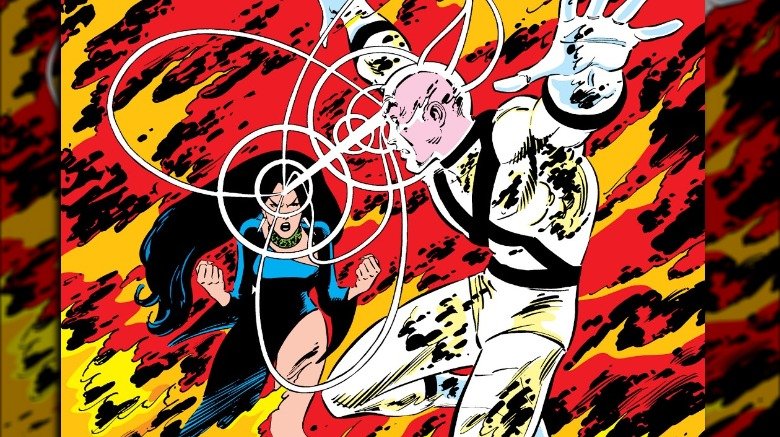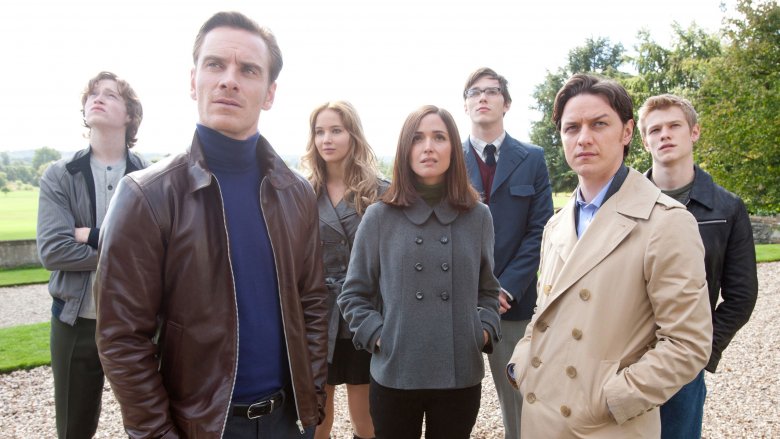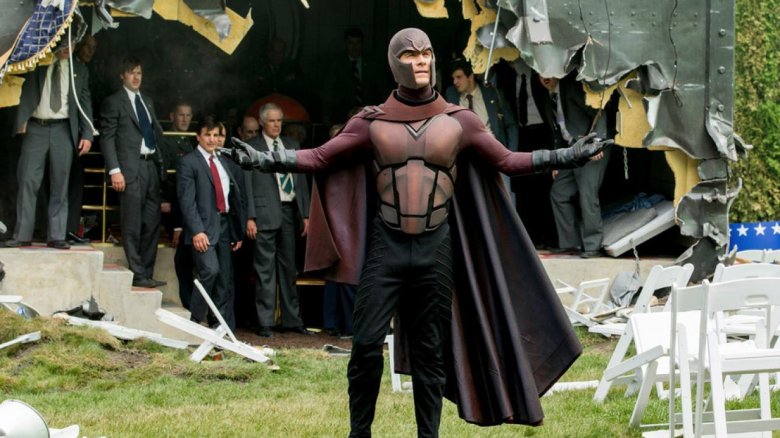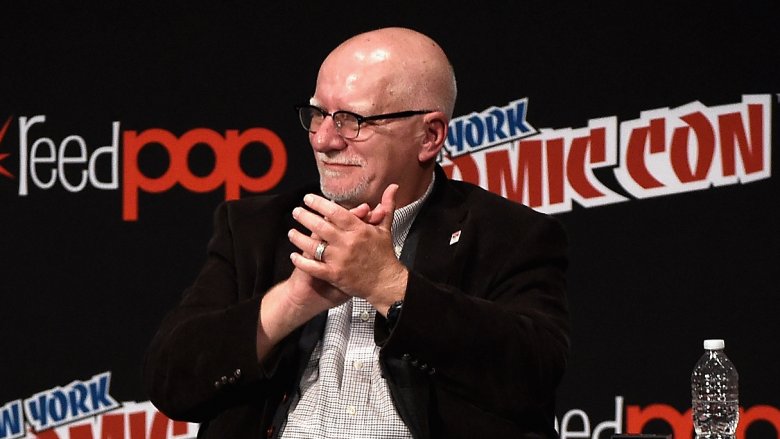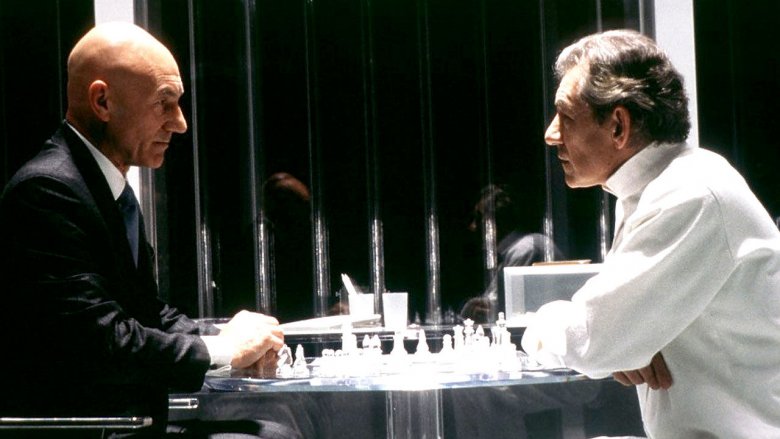Easter Eggs You Missed In X-Men: Dark Phoenix
Since the first X-Men movie all the way back in 2000, the architects of the franchise have been dropping in small nods and references to the comics that inspired the films, inserting character names onto computer screens, placing deep-cut mutants in the backgrounds of scenes, and slyly calling back to the X-Men comics stories that have been coming out since 1963.
Dark Phoenix, which is being treated as the capstone to the Fox version of the film franchise, includes a number of references to past entries in the series; it'd almost have to be a given that it's been promoted as the period on a 19-year run of movies. But it also continues the tradition of including a spate of comics references with some big and not-so-big Easter eggs for the eagle-eyed (or in one case, eagle-eared) and comics-versed. Here's a look at some of the X-Men Easter eggs you may have blinked and missed on your first watch. And if you haven't seen the movie, here's your warning: Spoilers are ahead.
Significant songs
Dark Phoenix opens with a tragic scene set in 1975, a pivotal year for the X-Men because of the release of Giant-Size X-Men #1, an issue that single-handedly revitalized a flagging Marvel franchise — there hadn't been a new issue in the five years prior — by bringing on characters including Nightcrawler, Colossus and Wolverine, a guy you might have heard of.
Before the scene turns tragic and the Greys crash their car, an argument over what's on the radio leads to two significant songs being played as Jean telekinetically turns the dial. The first is the 1967 Glen Campbell version of "By the Time I Get to Phoenix," which, uh, should be self-explanatory. The other is a little deeper in its meaning. It's "Werewolves of London" by Warren Zevon, which was released in 1978, making it an anachronism (maybe Jean brought it to the radio from the future). It'd seem to be a reference to the first issue of Excalibur, titled "Warwolves of London." That series saw a ragtag team of former X-Men, including the Rachel Summers version of Phoenix and Nightcrawler, carrying on in the United Kingdom after they believed the rest of the team to be dead. Excalibur also stars Kitty Pryde, who seemingly makes a very quick cameo phasing through a wall late in the movie.
Bedazzled
The movie's "present day," as it were, is 1992, the year the popular X-Men cartoon series started (Marvel even recently published a series titled X-Men '92). The early '90s weren't exactly associated with disco, but they also weren't filled with the flat-screen monitors and 2019 fashions we see in the movie, so we can say the appearance of Dazzler — yes, Alison Blaire herself — fits just fine.
Dazzler belts out some dance tunes at the outdoor party celebrating the successful (as far as the X-Men know) mission to save the NASA astronauts from certain doom on the space shuttle Endeavour, which notably did have its first mission in May 1992. Though a superhero herself in the comics, Dazzler doesn't seem to be much more than the X-Men's personal party singer here. Speaking of very specific jobs, the party scene also includes a quick appearance by New Mutants character Match, who lights a fire. Like Phoenix, he's got a bit of a temper.
The D'Bari and Vuk
It wouldn't be too surprising if you missed the name of the alien race that served as Dark Phoenix's ultimate antagonists, since it's only mentioned once in the whole movie. They're the D'Bari, a race of aliens who, in the comics, look kind of like broccoli. They've appeared in a number of comics stories over the years, first in Avengers #4, and sometimes as villains. But for the purposes of Dark Phoenix, their most important appearance was in Uncanny X-Men #135, in which a Phoenix-possessed Jean Grey destroys their home planet. The association with the Phoenix Force is basically where the movie version of the D'Bari's similarities to the comic characters end. Their shapeshifting powers are much more like Skrulls.
Jessica Chastain plays D'Bari leader Vuk, who is also very different in the comics. Instead of desiring the Phoenix Force for the purposes of creating new worlds, comics Vuk simply wants to attack Jean Grey and get revenge for his (yes, his) home planet. He gets a pretty sweet suit of armor and adopts the name Starhammer in one attempt, but is not successful.
Bishop Power
Time traveler, professional rebel, part-time sleuth and all-around cool guy Lucas Bishop actually appeared in one X-Men movie: 2014's Days of Future Past. He died in that movie, but then his death got erased when the timeline changed at the end. Time travel is complicated. And none of it really matters anyway, because he only manages to return in Dark Phoenix in the name of the Red Hook-area electrical utility.
In the scene when the X-Men arrive to confront Jean in the neighborhood where she grew up after she discovers her father is still alive, a truck emblazoned with the words "Bishop Power" is visible in the background of several shots. That may be a nod to Bishop's mutant abilities. While they're not specifically electrical in nature, he can absorb and release various forms of energy. Or who knows, maybe the movie version of Lucas Bishop's family decided to found a public utility, and the future version of him will just run that. It's good work if you can get it.
Genosha?
The Magneto of Dark Phoenix is more or less retired. He tells Jean he's essentially decided that hurting people won't do him any good anymore, so he's stopped with all that, opting to live on a secluded island given to him by the U.S. government as a sort of haven for mutants who just want to get away from it all. It's a simple community built from old shipping containers and other flotsam Magneto has likely pulled out of the ocean with his powers.
Magneto's new homeland isn't given a name in the movie, but it seems to clearly be a version of Genosha, the island mutant homeland from the comics. The comics version is a much more imposing place, however. Initially, it was a nation where mutants were enslaved, but the X-Men toppled its regime while saving allies imprisoned there. Later, the United Nations ceded control of the country to Magneto, who made it a mutants-only nation. It's been the site of numerous conflicts since then.
Luna, what's wrong?
Before becoming the shapeshifting Vuk, Jessica Chastain plays a very nice and particularly unfortunate woman named Margaret who's hosting a dinner party. Her dog won't stop barking, so she goes out into the yard to check on her, and does not return. Instead, Vuk steals her appearance and apparently kills everyone who was at the party. Before that happens, we hear the dog's name several times: Luna.
There's a pretty prominent Luna in X-Men (and other Marvel) comics, and she is not, in fact, a dog. She's Luna Maximoff, the daughter of Quicksilver and the Inhuman princess Crystal. Though she first debuted in 1982, she's still usually depicted as a child in recent comics stories, often appearing as a supporting character in stories involving Quicksilver or Crystal. One trait she does share with the dog is a certain type of empathy — that dog clearly knew something was up when the D'Bari arrived. Luna's powers involve manipulating emotions and a sort of psychic healing.
X-Women
Mystique and Professor X butt heads several times in the film's early going, and in a scene after the astronaut rescue, Mystique accuses him of putting her team in unnecessary danger just so he can get accolades and face time with the president. Her button on that conversation is to say that the women of the group spend a lot of their time saving the men, so maybe they should change their name to the "X-Women."
Perhaps that's just a turn of phrase in the script, but there's a chance it could be a sly reference to a few comics projects. The one comic with the title X-Women was a 2010 single issue written by Chris Claremont, the legendary X-Men writer who has a quick cameo in Dark Phoenix as a White House guest, and with art by Italian artist Milo Minara. It's not exactly a document of women's empowerment, though, with Minara's cheesecake art and a sequence with the X-Women riding jet skis in bikinis. A less provocative book with a team comprised entirely of women was a 2013 series simply titled X-Men.
The MCU strikes
There are not many jokes in Dark Phoenix. There are almost zero comedic moments, despite earlier movies in the franchise having a good bit of comic relief. Remember when Wolverine verified that he wasn't Mystique when Cyclops asked him about it in the first movie? Good stuff.
Dark Phoenix totally plays it straight, but there's one thing you could definitely call a sort of meta-joke in the new universe where the Disney Company owns 20th Century Fox. As some viewers noticed in the trailers, the paramilitary group that uses depowering ammunition and shock collars to apprehend mutants near the end of the movie goes by the initials "MCU," according to the patches on their sleeves, which likely stands for something like "Mutant Control Unit."
In the cartoon, this organization is called the Mutant Control Agency, but it's clear the filmmakers wanted to change that one letter to have a little fun. A heavily militarized group using futuristic weapons and going by the initials MCU take these 20th Century Fox versions of mutants away to reprogram them to their will. That sure seems like some kind of metaphor for something. But also, they're not all bad. When the real bad guys attack, they team up with the X-Men.
The Jean Grey School
Following Jean's sacrifice at the end of the climactic battle, we see that Charles Xavier has moved on to live a life of playing chess outside of cafes. Hank McCoy, now staying in his Beast form, has taken over as headmaster of the school, and he's given it a new name: The Jean Grey School for Gifted Youngsters. It's his tribute to her for choosing the path of light, and a not-so-subtle jab at his old mentor.
The school has borne Jean's name in the comics, too. In the series Wolverine and the X-Men, new headmasters Wolverine and Kitty Pryde rename the school the Jean Grey School of Higher Learning after Professor X's death — one of many he has endured. In that case, it's less a slight toward Xavier and more of an indication of a new generation of students at the school, which would, of course, bear Xavier's name again a few years later.
A quick cameo for an immortal psychic vampire
Considering that the X-Men: First Class film already used the Hellfire Club as antagonists, the filmmakers didn't have a whole lot of options when it came to adapting the Dark Phoenix storyline just as it appeared in the comics — especially since the barely-coded sexual undertones of the Club in the comics wouldn't exactly make the group a good fit for a PG-13 film. Despite that, they still managed to sneak in a quick reference to the original Chris Claremont and John Byrne comics with one of Magneto's lieutenants. One is a guy who throws his hair braids around as whips and, shockingly, doesn't seem to be any one of the hundreds of X-Men characters featured in the comics. The other is a telepathic mutant named Selene — although she's only called that the moment she's knocked out of the train at the end of the film.
In the comics, Selene has been a frequent antagonist to the X-Men and has occasionally been the Black Queen of the Hellfire Club (although not at the time that the Hellfire Club manipulated Jean Grey into becoming Dark Phoenix). Comics Selene is also an immortal psychic vampire who might be the world's very first mutant, predating Namor, Apocalypse, and Wolverine. Movie Selene doesn't have much in common with her comics counterpart, but it's a nice nod to the canon.
The last of the First Class: The Last Class
While X-Men: Dark Phoenix is ostensibly an adaptation of the X-Men story of the same name, it's also a conclusion to the new X-Men timeline that started in X-Men: First Class. As the surviving members of the chronologically first X-Men film, Beast, Mystique, Professor X, and Magneto all get endings to their unique arcs. There's a reason for that: as Beast tells Mystique during the Dazzler party, "We're the last of the First Class." With Darwin killed in the first movie, Angel and Banshee killed offscreen in Days of Future Past, and Havok killed in X-Men: Apocalypse, only Beast, Mystique, Charles, and Erik are around to remember the swinging sixties.
That's also why audiences see Beast in charge of the Jean Grey school at the end of the film; he's the most senior X-Man around who's not busy playing chess in Parisian cafes. Mystique dies trying to help Jean, which is less a conclusion to her arc than it it is to actress Jennifer Lawrence's ongoing attempts to extricate herself from the X-franchise. Meanwhile, Magneto seems to have let go of his anger, and Charles has removed himself from his school in order to not let his ego continue to do damage.
Magneto's newspaper clipping
While Michael Fassbender's Magneto has come a long way from 2011's X-Men: First Class, he hasn't forgotten the past. He might be ruling the island nation of Genosha and acting as a father figure to a sanctuary of mutants, but Magneto's got his own lockbox of secrets just like Jean. In Erik's case, that lockbox contains his telepathy-proof helmet (originally inherited from Kevin Bacon's Sebastian Shaw) and a newspaper clipping that references his standoff against the X-Men on the White House lawn in X-Men: Days of Future Past. Both objects aren't exactly points of pride for the former mutant terrorist. The helmet was previously worn by the nazi scientist who killed Erik's mother, and the clipping references the time Magneto almost killed his ex-lover Mystique. That's some heavy baggage to keep around the house. With Dark Phoenix looking to be the end of the X-Men franchise as we know it (at least until Disney reboots it), there are plenty of glances back to the past before we head off into that wild unknown future.
Chris Claremont's cameo
While Stan Lee and Jack Kirby might have created the original X-Men, the larger X-franchise owes a huge debt to Chris Claremont. Claremont is the co-creator of pretty much all of your favorite X-Men, and he spearheaded the direction of the X-universe for over 20 years. From The Dark Phoenix Saga to God Loves, Man Kills, it's no exaggeration to say that the X-Men's popularity as we know it is largely a product of Claremont's collaborations with artists like Dave Cockrum, John Byrne, and Jim Lee. In terms of the X-Men, Claremont's shadow looms nearly as large as Stan Lee's own.
Fittingly, the filmmakers behind Dark Phoenix saw fit to give Claremont a cameo in the film. During the scene in which Charles Xavier is accepting the accolades for the X-Men's successful rescue of the Endeavor space ship, Claremont can be briefly seen in the crowd.
Keep it close to the chess
The more things change, the more things stay the same. While the X-Men movie universe has gone through two timeline shifts and multiple actor recastings, some things, like Erik and Charles' never-ending chess game, never change. By the end of Dark Phoenix, everyone has moved on; Beast is running the school, Jean Grey's become an immortal flame bird creature in the sky, and Charles is hanging out in Paris. Erik arrives and badgers him into playing a game of chess as the movie ends. It's a fitting end to a long and twisting franchise; while the films had many endings, Charles and erik's ongoing chess game remained a major motif. It's a nice way to nod to the fact that although the franchise will be ending as the X-Men gets absorbed into Disney and the MCU, some things will continue on. In the words of a different bald superhero: "Nothing ends, Adrian. Nothing ever ends."
